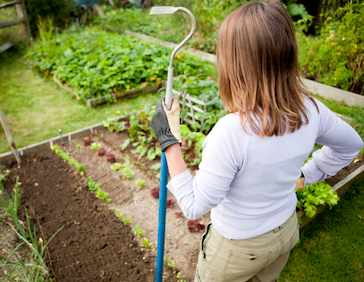 Many of the same guidelines apply for fall gardening as spring gardening. The site for the garden needs to have a water source, full sun and well-drained soil.
Many of the same guidelines apply for fall gardening as spring gardening. The site for the garden needs to have a water source, full sun and well-drained soil.
The timing of the planting is important: Use a garden guide that is based on the first average killing frost date – ours is Nov. 16. Based on days to maturity, you can calculate back to when a vegetable needs to be planted.
Some of our vegetables have cold tolerance and will survive even if the temperature drops below 32 degrees. These frost-tolerant vegetables include beet, broccoli, Brussels sprouts, cabbage, carrot, cauliflower, chard, collard, garlic, kale, lettuce, mustard, onion, parsley, spinach and turnip.
Shorter-term fall garden vegetables that are frost-susceptible include beans, cantaloupe, corn, cucumber, eggplant, okra, pea, peppers, Irish potato, sweet potato, squash, tomato and watermelon.
To prepare for the prime vegetable gardening season just around the corner, remove any spent vegetable plants. Then, add a 4-inch layer of compost or aged manure over the entire garden area to enrich the soil.
• This month, you can plant the following vegetables: pole beans, broccoli, celery, collards, sweet corn, eggplant, bunching onions and shallots, peppers, pumpkin, squash, okra, Southern peas and watermelons.
• Fertilize your fruit trees, such as peaches, apples, mangoes, avocados and citrus.
• The following vegetable seeds can be sown now for a September planting: pole, bush and lima beans; sweet corn; cucumbers; eggplant; peppers; Southern and English peas; summer squash; tomatoes; broccoli; cabbage; celery; collards; endive/escarole; kale; leak; lettuce; turnips; mustard.
2 Responses
very informative thanks for all the great tips
hay veg head great insight and knowledge.thanks for sharing